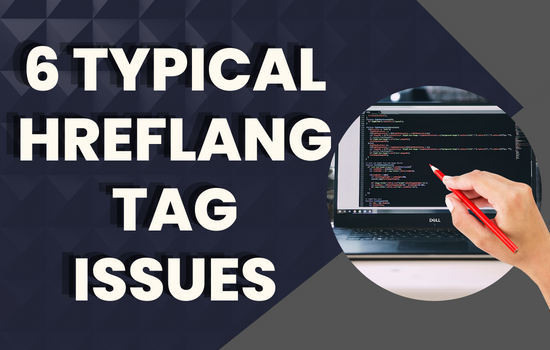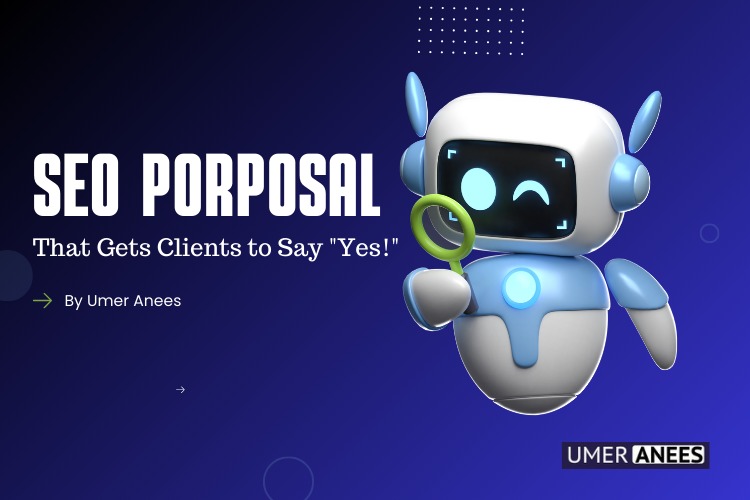Hreflang tag issues can significantly harm a brand’s foreign targeting and search engine ranking.
No universal strategy compounds the problem. Each implementation is distinct to the business.
The hreflang attribute is a hot topic of discussion (and confusion!) among even the most experienced SEOs and webmasters.
If you’re moving your site or starting from scratch, make sure your hreflang implementation is correct.
When used correctly, it increased impressions and organic traffic by 20% to 300%.
At Umeranees.com, we help clients all the time with international SEO and help them avoid making common SEO mistakes.
Here are six common hreflang tag issues, how to fix them, and how to prevent them.
Hreflang Tags: Why Are They Important For International SEO?
A hreflang tag tells search engines which version of your business to show a user based on language and region.
While managing different e-commerce accounts under the same brand, you can change the URLs for the target language.

Because of this, you can use native language keywords in your URLs more effectively and optimize a page as needed.
If you resolve the hreflang tag issues correctly, Google will index and show the right version based on location and language.
User experience changes and source code conflicts affect SEO.
If a user sees your geo-targeted page, you may get more links. This can increase conversions and lower bounce rates.
How Should A Correct Hreflang Tag Appear?
Let’s examine the advantages of resolving accurate hreflang tag issues before moving on to typical blunders.
Let’s imagine you are the owner of “Good Shoe Shop,” a shoe shop.
You currently oversee two domains, one of which is the a.com domain which targets American and German customers (the a.de domain).
It makes sense to show the.com website to U.S. users and the.de website to German customers.
You translated the German store and used URLs that target local keywords.
Excellent SEO work!
For a “Shoes” collection page on the the.com store, the right hreflang tags would look like this:
- <link rel=”alternate” href=”https://goodshoeshop.com/collections/shoes” hreflang=”x-default”>
- <link rel=”alternate” href=”https://goodshoeshop.com/collections/shoes” hreflang=”en” />
- <link rel=”alternate” href=”https://goodshoeshop.de/collections/schuhe” hreflang=”de” />
When a user is in Germany, these hreflang elements tell Google to show them the.de version of your store.
When a user’s location or language is not specified in the hreflang tag, the “x-default” attribute instructs Google to display this default version.
German users may see the.com version without hreflang elements because it performs better for English keywords.
As a result, they would see prices in USD, delivery information from the US, and no translations into their native tongue.
Can you envision how the client experience would differ? Hreflang tags are crucial for your international SEO since they allow you to offer customers the appropriate version of your store based on their location.
6 Typical Hreflang Tag Issues
Here are the top six hreflang tag issues we’ve seen, which are turning away clients and costing businesses money.
1. Absence of Return Links
“If page X connects to page Y using a hreflang tag, page Y must link back to page X. This return link must appear on any page that uses hreflang annotations.”
Every line of hreflang code in the hreflang tags that links to another page must have the same hreflang code on every page it links to.
For instance, if the page with the hreflang tags is www.example.com/uk-site, the code would look like this:
- <link rel=”canonical” href=”https://www.example.com/uk-site”>
- <link rel=”alternate” href=”https://www.example.com” hreflang=”en” />
- <link rel=”alternate” href=”https://www.example.com/uk-site” hreflang=”en-gb” />
- <link rel=”alternate” href=”https://example.com/fr-fr” hreflang=”fr-fr” />
- <link rel=”alternate” href=”https://example.com/de-de” hreflang=”de-de” />
The page’s German translation should then appear as follows:
- <link rel=”alternate” href=”https://www.example.com” hreflang=”en” />
- <link rel=”alternate” href=”https://www.example.com/uk-site” hreflang=”en-gb” />
- <link rel=”alternate” href=”https://example.com/fr-fr” hreflang=”fr-fr” />
- <link rel=”alternate” href=”https://example.com/de-de” hreflang=”de-de” />
Ensure that the code is uniform throughout all pages to avoid this hreflang clash as much as possible.
Search engines may misinterpret hreflang pages without return links. It must additionally provide a 200-status code to show that the link is active, in addition to the URL being missing.
We recommend that you export all of your website’s hreflang tags for testing, making sure that each link returns a 200-status and that each page has the same hreflang tags.
2. Misleading Language Codes
All hreflang attributes use ISO 639-1 language codes. It is the most widely used terminology for languages that is standardized.
If the country or language isn’t written in one of these ways, search engines won’t be able to find it and rank it correctly. For example, people often type “uk” instead of “gb” when they mean to type “gb” for the United Kingdom.

Make sure that the appropriate language codes are included when establishing hreflang tags for Chinese.
For instance, the hreflang tools that are currently available on the market will frequently spot a Chinese spelling mistake when it is stated as “zh-hans-tw.” But this is accurate.
It is very important to make sure that all language codes follow the right ISO standard. The bottom line: to make sure you have the right version, always double-check all language and country/region codes at initial implementation.
3. Missing or incorrect canonical tags
Canonical tags specify which page you want Google and other search engines to index. All of the versions of that page may be de-indexed if the canonical tag refers to a different page or is absent entirely.
Additionally, search engines may determine that a site is intended for a US audience rather than a local, geo-targeted audience if all of its canonical tags on all of its international domains point to the US version of the site instead of having self-referencing canonical tags. As a result, the site may be removed from local indexing (being de-indexed).

Another issue is a website’s absence of self-referencing hreflang tags. If a page doesn’t have any self-referencing hreflang, its hreflang features might not be taken into account or be misunderstood.
4. Deleted Pages
The hreflang tags won’t be taken into consideration if a page is prohibited from being indexed. To stop this, be certain:
In the robots.txt file, you do not have any pages with a hreflang tag listed.
In any plugins or iframes that render at the top of the page, you are not using a “noindex” tag.
Another common hreflang problem we have seen with clients is headers with a “noindex” tag or extra JavaScript that blocks the hreflang tags. Some websites have had their entire pages removed from crawling as a result of this.
Making sure that no additional executable code, iframes, or even advertisements are inserted before or in between the opening head> tag and the closing /head> tag is the easiest method to avoid this problem.
5. Various Language Coding
Websites made for people all over the world usually have language encoding in the header that tells what kind of content is on a page:
<html lang=”en” xml:lang=”en” xmlns=”http://www.w3.org/1999/xhtml”>
Recently, we became aware of a problem with websites whose hreflang designation did not match the language encoding given in the header of such websites.
The UK site clashed with the US site, and the US version appeared in search results because it used “en-us” rather than “en-gb.”
We recommend crawling each page to make sure that each site has the right language encoding set.
Language encoding conflicts “confuse” search engines, causing them to index incorrectly or not at all.
6. Incorrect or Missing “x-default”
One of the most debated topics in SEO is how to use “x-defaults.” These tell Google where to send visitors when none of the hreflang tags apply, and they mostly have to do with user experience.
The “x-default” is what Google suggests as:
“…indicates to our algorithms that this page is the default one to be displayed when there are no other pages that are more appropriate.
So, should your website have an “x-default”?

No matter if a site has hreflang tags or not, it may still appear outside of a particular market or region.
Moreover, we found pages outside of those specified in Google search results, indicating that Google selects the preferred domain, which may not be the site you intended. For instance, customers from areas outside the primary markets of your company could want to buy anything.
We suggest designating “x-default” as the country choice when listing. In this manner:
- Ensures your audience gets directed to the right site or page; and,
- Enables you to direct messaging to audiences for countries outside the specified region.
To figure out when to show the “x-default” to users, you need to use the browser’s location services. At the moment, there is no technology that can help find the right “x-default” for a site.
To get the most out of “x-default,” you should look at the traffic in each new location to figure out which version of the site is best. Take the following considerations into account when making your decision:
- how customers purchase products on your website
- How your team manages visitors from other countries
- Legal requirements for displaying or selling a product in a country
If nothing else works, direct people to a global nation picker and then, if necessary, use the “x-default” option.







